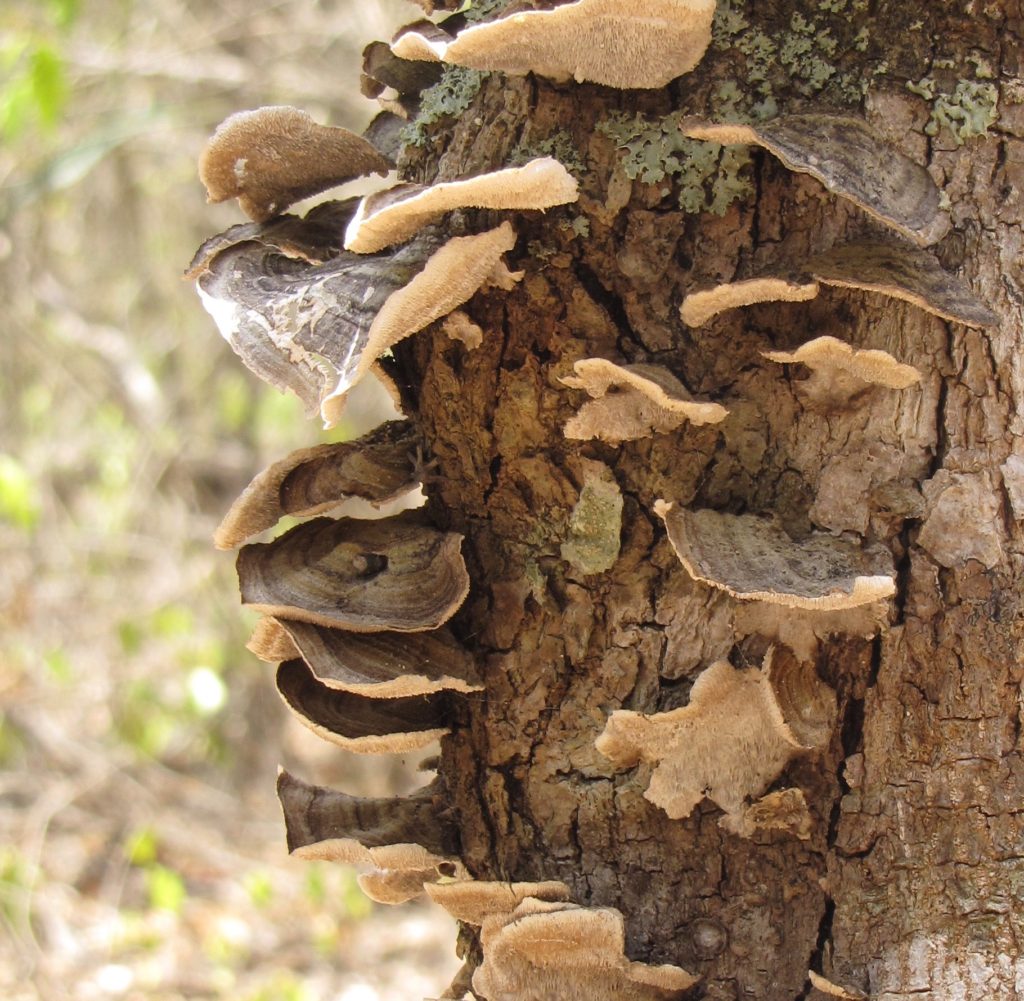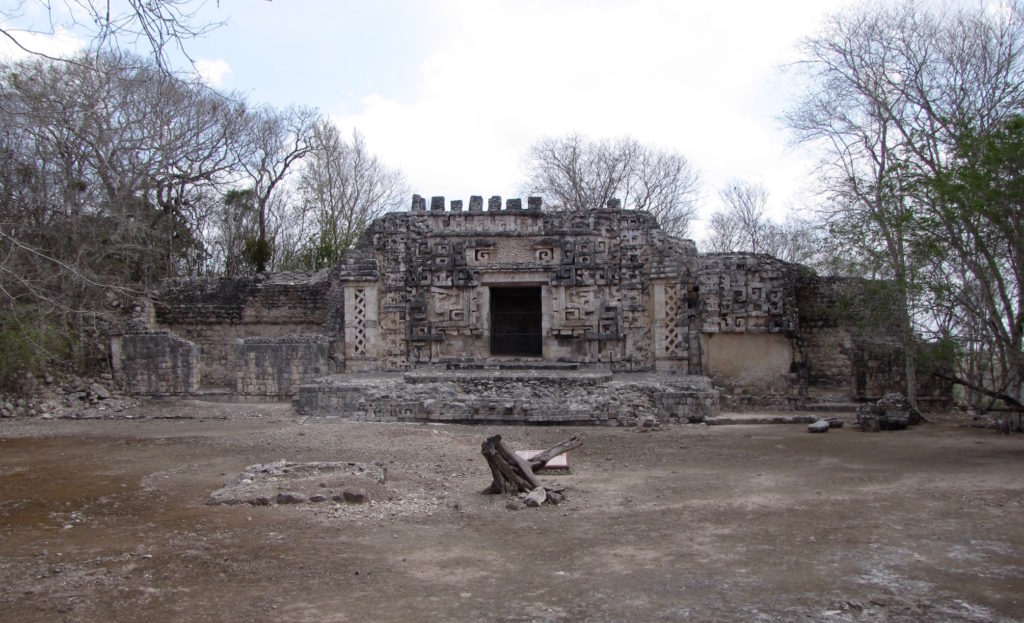
From Edzná we began our trek to Hochob, the first Chenes-style site of our trip.
In contrast to the well-trod, well-maintained routes that had led us to every archaeological area up to this point, the way to Hochob was largely unmarked and required the use of narrow, rough, and unnamed roads. It would have been nearly impossible to find without a GPS, and was challenging even with one. So challenging, in fact, that we ended up using two different apps simultaneously (one on each phone), comparing and contrasting the maps they showed us as we inched our way towards our destination.

As should be expected given its small size, remote location, and frequent absence from guidebooks, Hochob is not the bustling tourist beacon of places like Chichén Iztá or even Dzibilchaltún. The handful of other visitors we encountered during our stay consisted entirely of a Mennonite family and a father with his young son, all of whom explored the site with the casualness of locals on family outings. They were pleasant co-adventurers, and their presence amongst the ruins, vultures, and stark, twisting vegetation lent an almost cozy feel to the otherwise spooky beauty of the site itself.
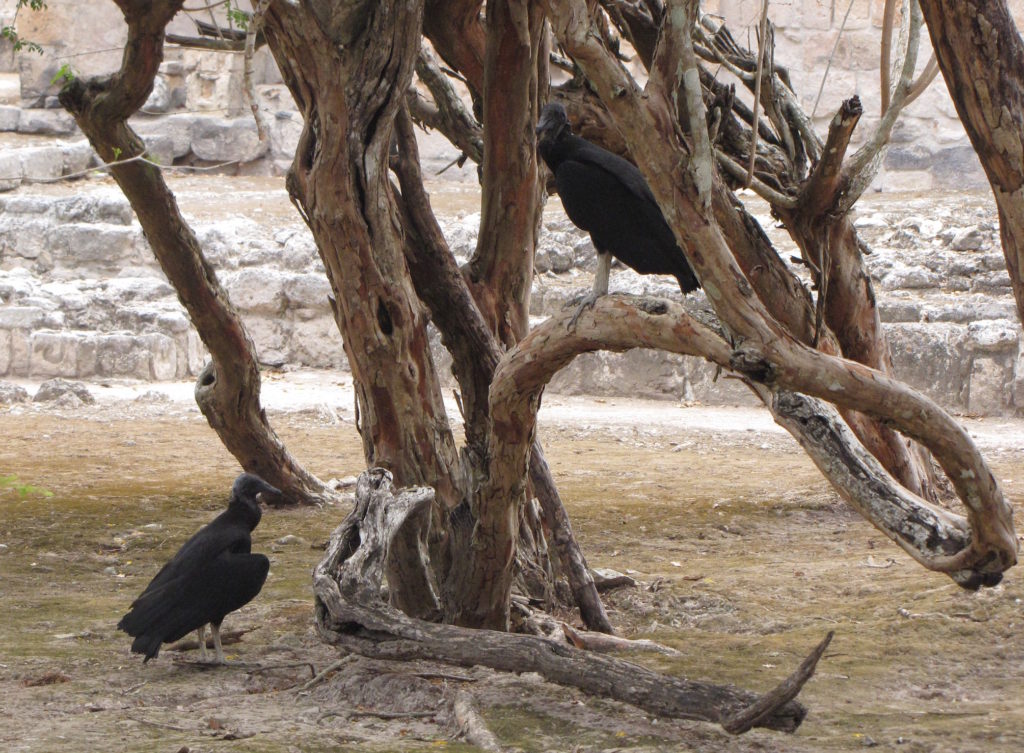
Unlike Edzná, whose residents had to create a massive platform to lift their ceremonial center above the surrounding valley, Hochob was built at the peak of a natural hill. Its population then expanded downward, creating terraced housing along the hillside (INAH). To reach the site now, visitors ascend a modern stairway composed of large, rounded steps that snake up the steep slope like a vertical conveyor belt.
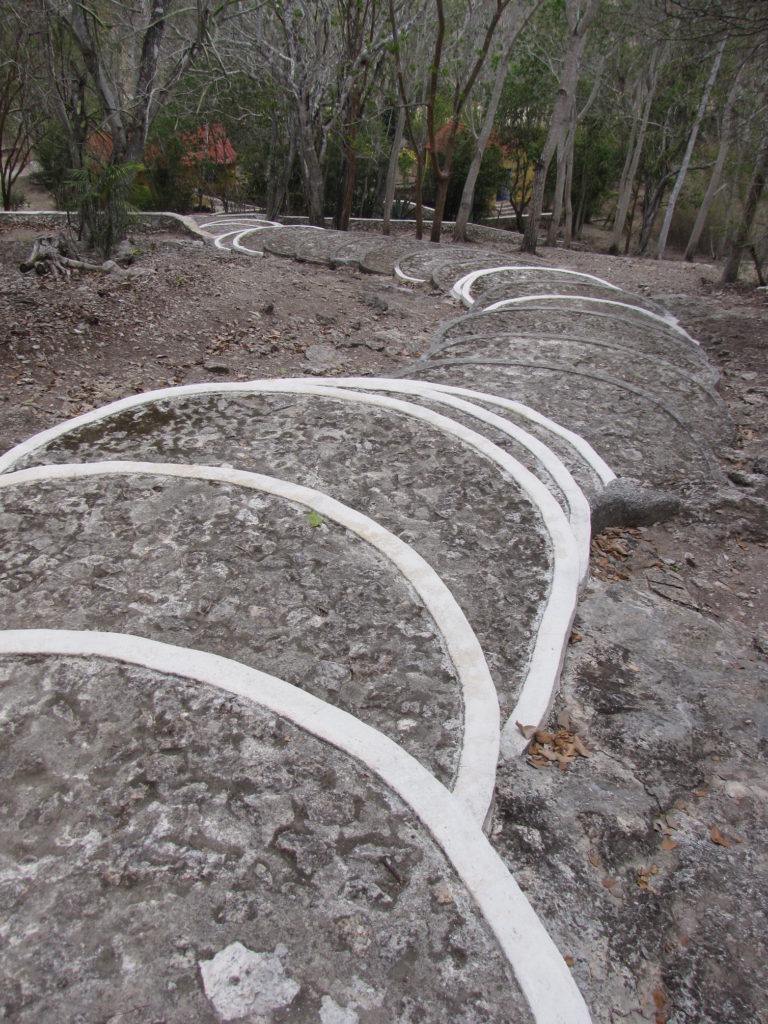
As we neared the top, we were greeted by an enormous, gaping face rising out of the cleared space of the courtyard. Although not the only building in the ceremonial center, this structure, known as the Palace, is by far the best preserved and most dramatic of the entire site.
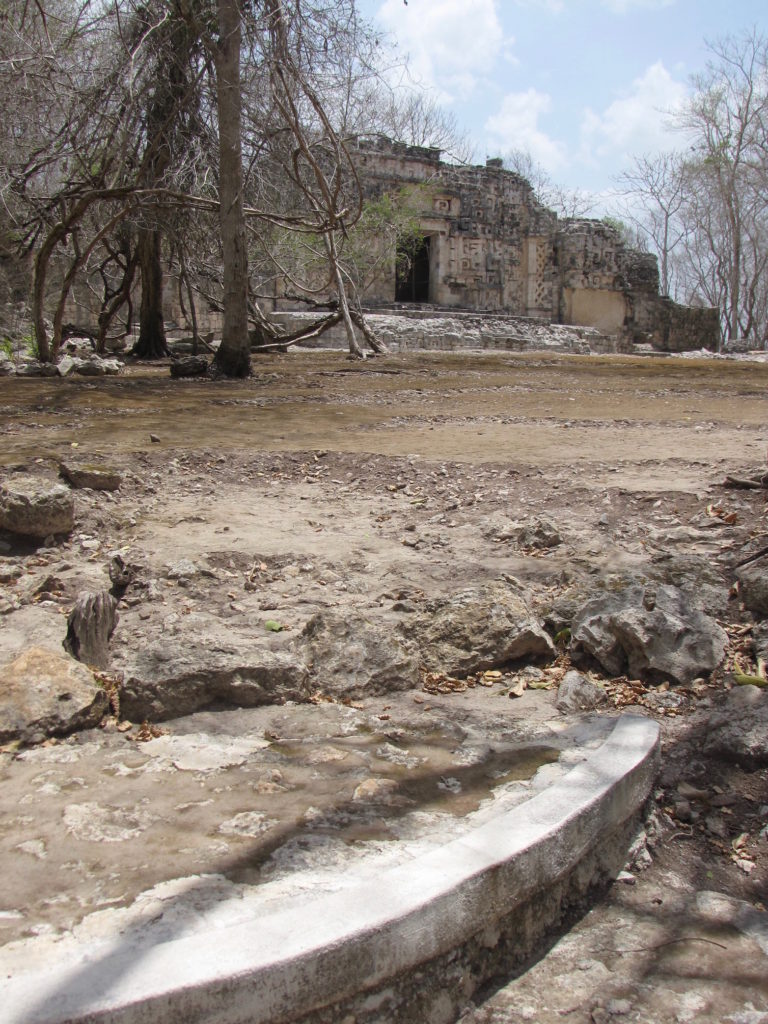
According to the plaque for the Palace (also referred to, less grandly, as Structure 1), the elaborate façade of the three-roomed building is a depiction of Itzamná, the Maya creator deity. Itzamná appears crouching and open-mouthed, with hook-like stones around the entrance forming the teeth of the god’s upper jaw and back molars. Narrow slabs protruding from the platform beneath the entrance represent the front teeth of its lower jaw.
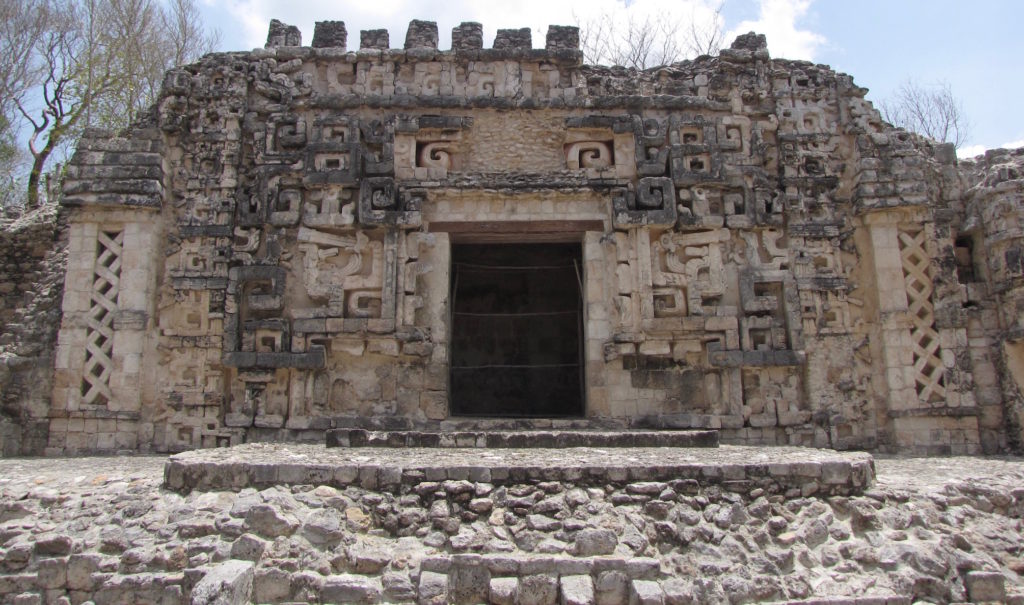
Remnants of both the stucco and red and black paint that once covered all of the center’s buildings still cling to the Palace’s exterior. Patches of red paint are especially visible in the crevices of Itzamná’s spiral eyes.
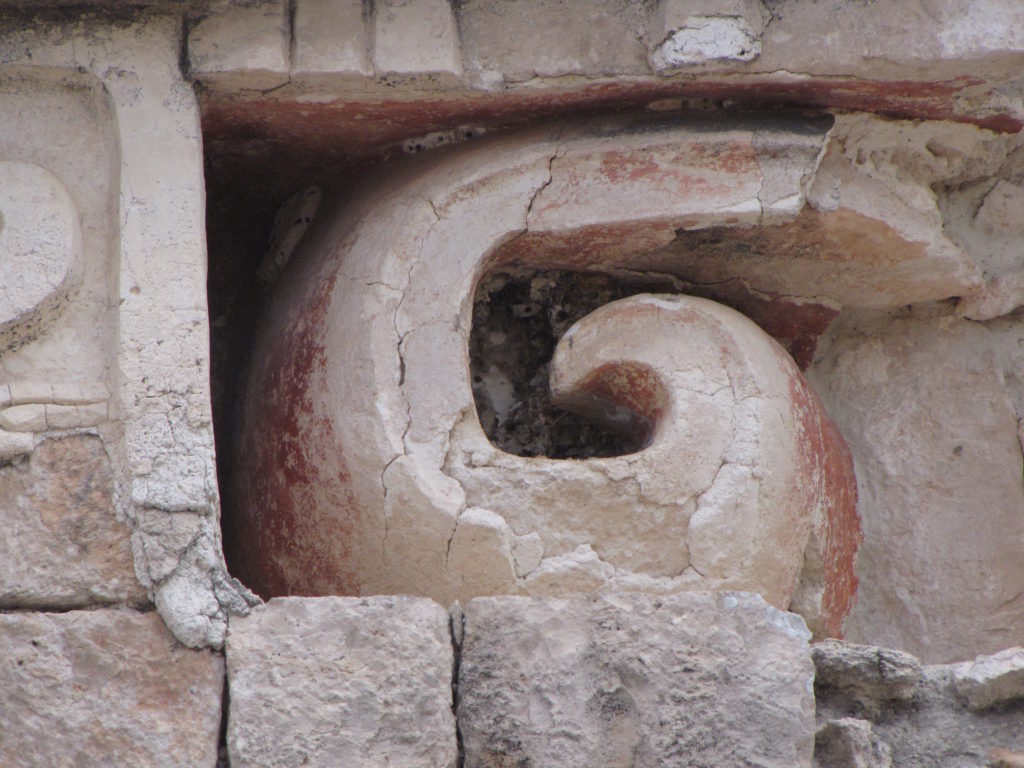
Use of an open-mouthed visage surrounding a central doorway and bordered by stacked, long-nosed masks is typical of Chenes architecture, a style that flourished from 600-800 CE in the region around Campeche and reached as far north as Uxmal, where another, similar face forms the focal point of the Pyramid of the Magician. At least two of the major buildings around Hochob’s small courtyard once possessed these masked façades, although the top half of the second structure is now missing.
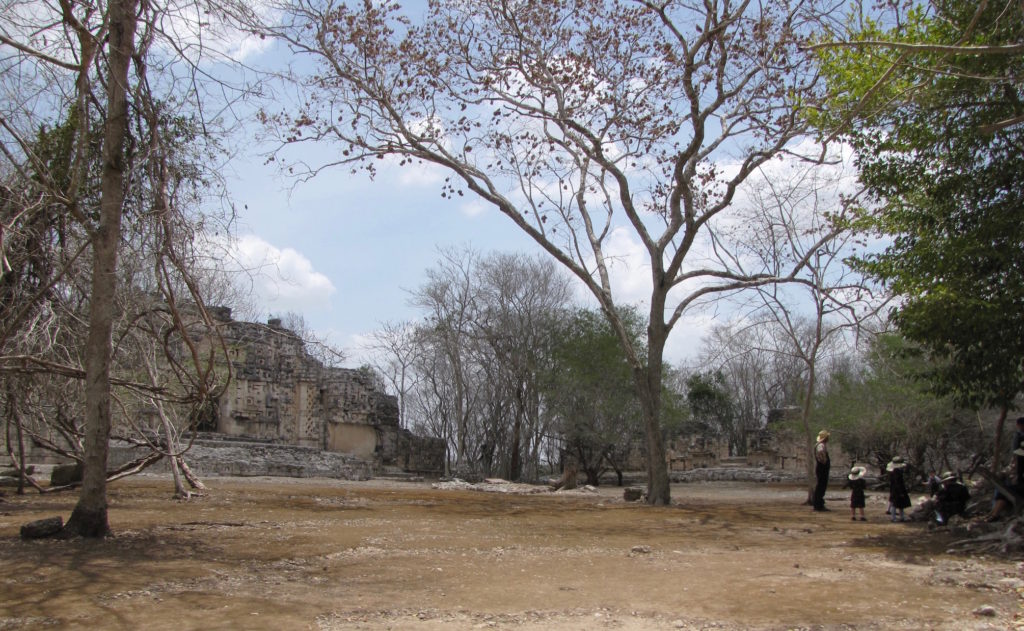
After exploring the Palace and surrounding buildings, we followed a path extending from the side of the courtyard opposite the stairs. This trail was dotted with the chultuns that once stored water for Hochob’s inhabitants and made their life on the hill possible.
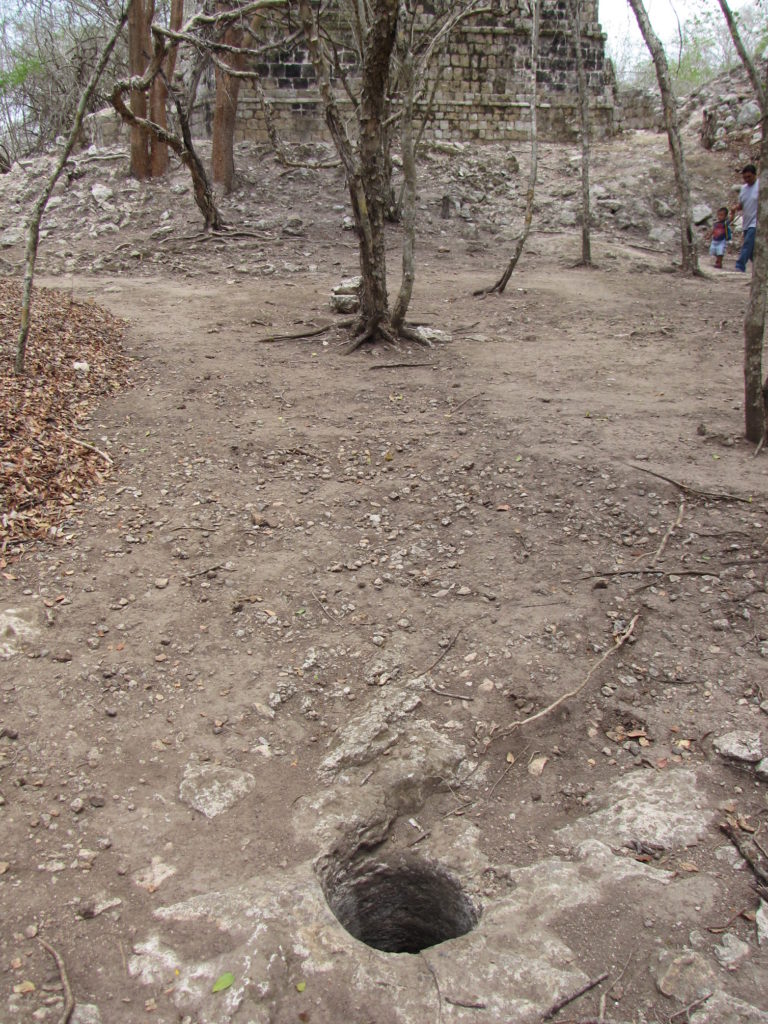
The simple, almost perfectly round holes had their own kind of stark (if slightly precarious) elegance, and we appreciated the opportunity to see them up close even as we tried to avoid accidentally stumbling into them.
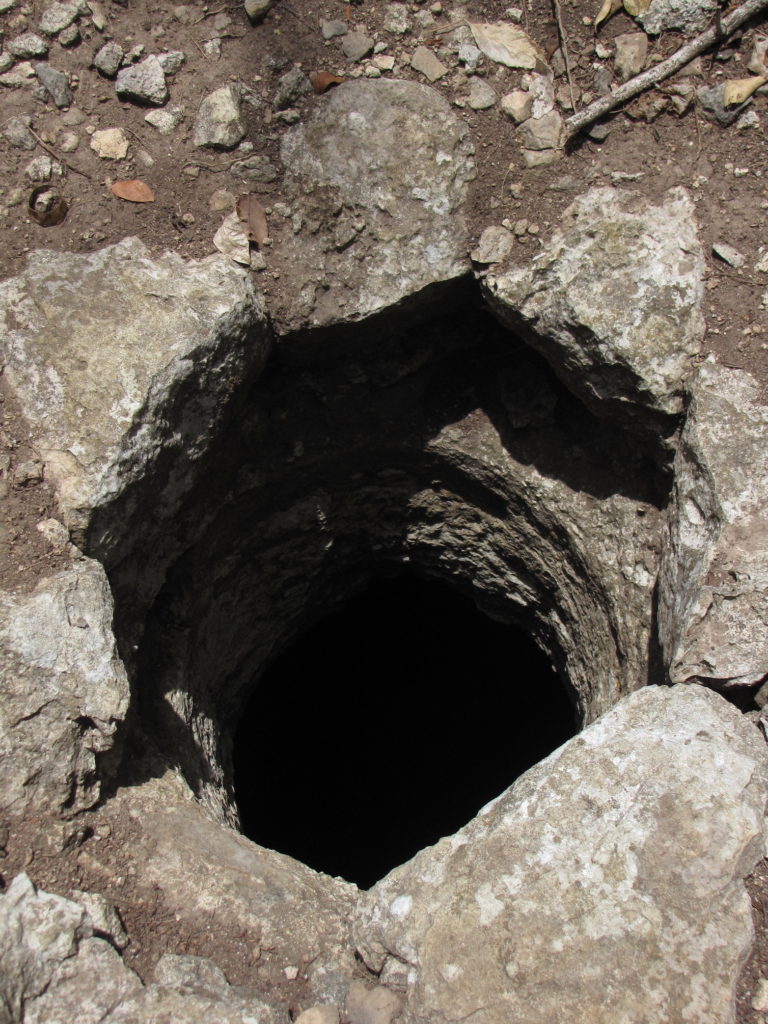
It was not yet mid-afternoon by the time we completed our nature walk/chultun stroll and made our way back down the generous staircase to the parking lot. Given the early hour, we briefly considered trying to add Santa Rosa Xtampak, the former capital of the Chenes region, to the day’s itinerary. Unfortunately, although less than 60 miles separate the two sites, there is no route between them that would take less than two hours. Going would have put us in high risk of trying to find our way back to Campeche in the dark, a prospect neither Josh nor I considered with relish. And so, happy with what we had seen but now also disappointed with what we were not able to do, we began the long, slow return journey to our hotel and a relaxed evening back in Campeche.
Highly subjective personal rating: 8/10 [worth the trek]
